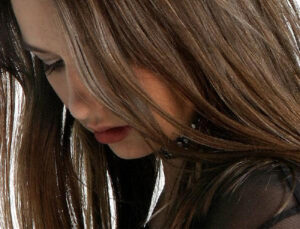Alopecia
Is the medical term for partial or complete hair loss on the scalp and other body parts. It is a fairly common condition with noticeable signs of hair loss seen in 40% of men aged 35 and 40% of women aged 40. There are various causes of alopecia or hair loss and alopecia areata is one of them.
What Is Alopecia Areata?
Alopecia areata is a condition wherein small patches of hair are lost on the scalp and other body parts. The bald spots are usually round or oval, smooth and the size of a coin. These patches often appear suddenly and randomly all over the scalp. Sometimes, only a number of hairless spots develop; in other cases, there could be more.
There are also rare occasions wherein alopecia areata results in total hair loss on the scalp, a condition called alopecia totalis. It may likewise progress to alopecia universalis, wherein hair loss happens all over the body, including the eyebrows, eyelashes, beard area and limbs. However, this is even rarer than alopecia totalis.
Prevalence of Alopecia Areata
According to a study published in 2015, alopecia areata is the second most common cause of hair loss in men and women, with androgenic alopecia topping the list. It is also said to be the most prevalent autoimmune disorder worldwide. The reports on the number of people suffering from alopecia areata varies. However, based on the 2015 study, this type of hair loss condition affects around 2 per cent of the global population.
Alopecia areata does not discriminate in terms of gender and age. This hair loss condition equally affects men and women, especially in the younger age groups. Meanwhile, most of those who have it later on in life are women.
In terms of age, it is known to affect all age groups but rarely affects people over 60 years old. Reports indicate that 25% of known cases involve children. It also tends to be more prevalent between the ages of 10 and 25 years. In fact, in 60% of cases, the onset happens before the age of 20 years. Studies further claim that when the first onset happens at an early age, the risk of the condition becoming extensive increases.
How to Deal with Alopecia Areata
The exact cause of alopecia areata is still not known. However, based on current evidence, experts classify it as an autoimmune disorder. In this condition, the body’s immune system attacks the hair follicles, thinking they are foreign bodies. Consequently, the follicles become inflamed and hair falls out. Eventually, the follicles shrink and cease to produce hair.
Just like most types of hair loss conditions, alopecia areata is not physically debilitating. Furthermore, it is not contagious and not life threatening. But it is not an easy condition. For one, it can be very unpredictable – you may lose hair suddenly, experience full regrowth and lose it once again. Moreover, it has a negative impact psychologically and emotionally. Many of those with alopecia areata deal with low self-esteem and go through bouts of depression. This is why, if you are suffering from alopecia areata, it is important for you to get professional help.
While there is currently no cure for alopecia areata, the Universal Hair & Scalp Clinic offers effective treatments which can help bring about remission. This includes promoting hair growth on affected areas and/or slowing down the progression of the disorder.
Accurate diagnosis and early treatment are the keys to successfully dealing with alopecia areata. So, please do not think twice about seeking professional help right away.
Concerned about alopecia areata? Do not suffer in silence! Call us at 01 6793618 and schedule an appointment with our hair loss consultant.
—


